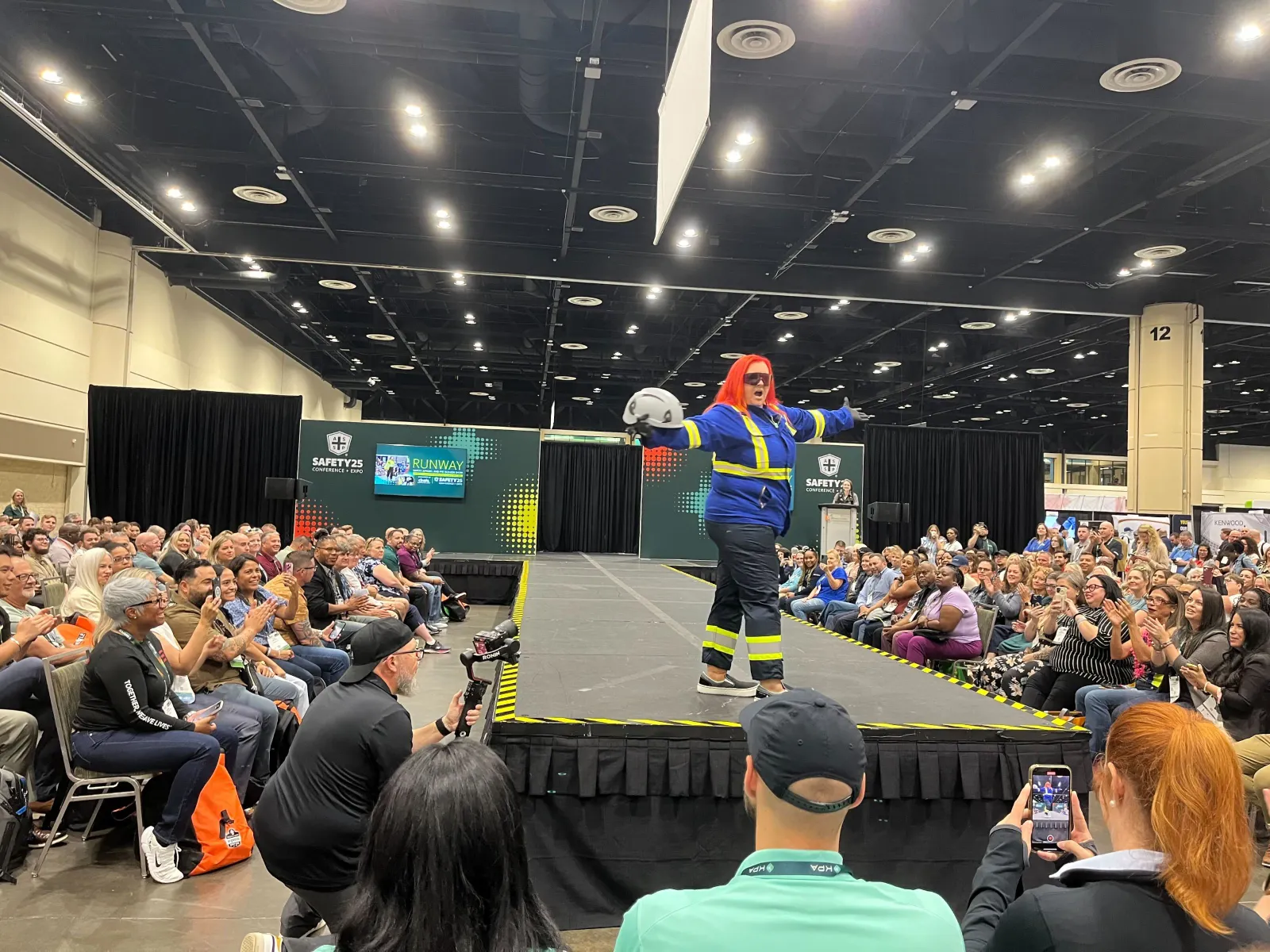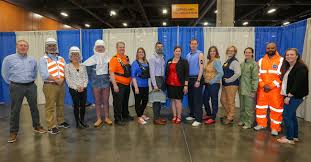
ORLANDO, Fla. — In a twist on the usual trade show presentation, safety advocates at the American Society of Safety Professionals 2025 Conference + Expo used a catwalk and a “PPE fashion show” to spotlight a persistent risk: protective gear that doesn’t fit all workers properly.
At one end of the buzzing expo hall, rows of seats filled fast while a crowd gathered around the stage. The models weren’t draped in high-end fashion — instead, they walked the runway in high-visibility vests, flame-resistant jackets, gloves, goggles and work boots. Their confident struts and playful poses drew cheers, laughs and photos.

While the crowd enjoyed the show, the message behind it was serious: with OSHA’s new standard now in effect, construction employers are required to ensure every worker’s personal protective equipment actually fits — and protects — the way it should.
“The real question is: is the PPE that you’re procuring and buying and using creating hazards rather than preventing them?” asked Amy Roosa, founder of The Safety Rack, a women’s PPE advocacy group, during a panel discussion held on the same stage the day before.
Loose or ill-fitting PPE can turn safety equipment into a hazard itself. A too-baggy vest can catch on machinery. Oversized gloves can snag or fail to grip. For decades, many women — and men with smaller or nonstandard frames — have had few good options.
“Women still don’t know what all is available to them,” said Kelly Franko, co-founder of the Alliance of Women’s Safety Apparel Manufacturers. Even when options exist, access can be limited — and many workers feel pressure to stay silent about poor fits to avoid being labeled as complainers.
Nicole Randall, vice president of the ISEA Foundation, emphasized that stigma and fear of speaking up keep workers in unsafe gear. “Women won’t always speak up for fear of the stigma of complaining,” she said.
And the problem isn’t limited to women alone. Workers whose body types fall outside standard sizes — whether smaller or larger — face the same risks when they can’t find gear that fits snugly and securely.
The topic is timely. In late 2024, OSHA updated its PPE standard to specifically require construction employers to provide properly fitting protective gear. It’s no longer enough to hand out “unisex” items or order in bulk without asking if they truly fit the workforce.

During the panel, Roosa called on both manufacturers and contractors to rethink old buying habits.
“If you’re going to say your fall protection is unisex, you better come at me with some data,” Roosa said. That means vendors must prove the gear protects all workers as promised — and safety managers must insist on it.
Bulk ordering one-size-fits-all gear might seem cheaper up front, but the risk of an ill-fitting harness or glove can cost far more if it leads to an injury.
Panelists stressed that better PPE for women and small-frame workers isn’t only about compliance — it’s about keeping skilled tradespeople safe and confident on site.
They urged manufacturers to ask more questions about who will wear their products, and they challenged contractors to push vendors to deliver real solutions — not just re-labeled men’s gear.
At the catwalk, the message was clear: well-fitting PPE can empower workers and prevent needless hazards. The crowd’s enthusiastic response suggested the industry is listening — but follow-through back on job sites will be the real test.
Originally reported by Zachary Phillips in Construction Dive.